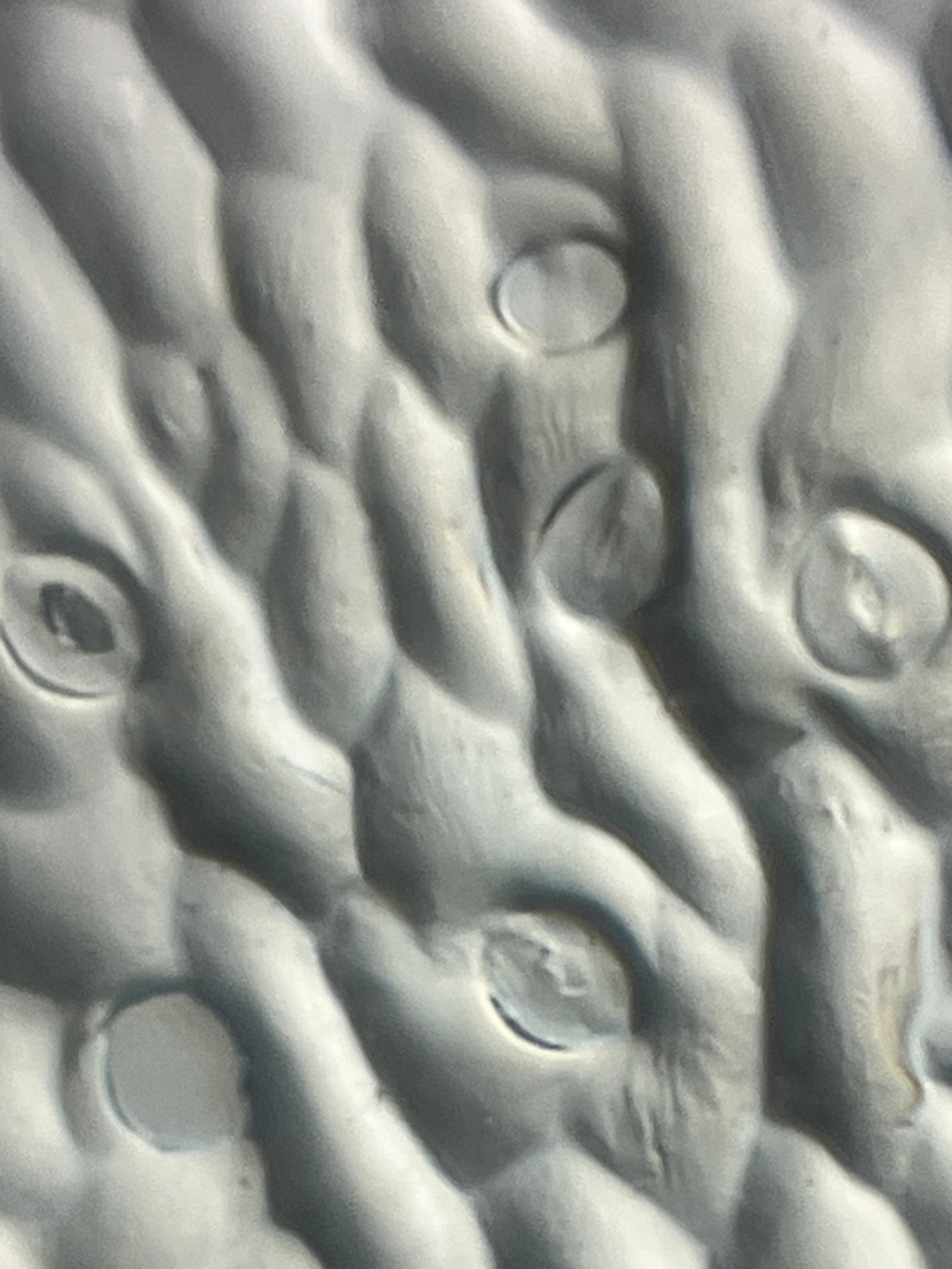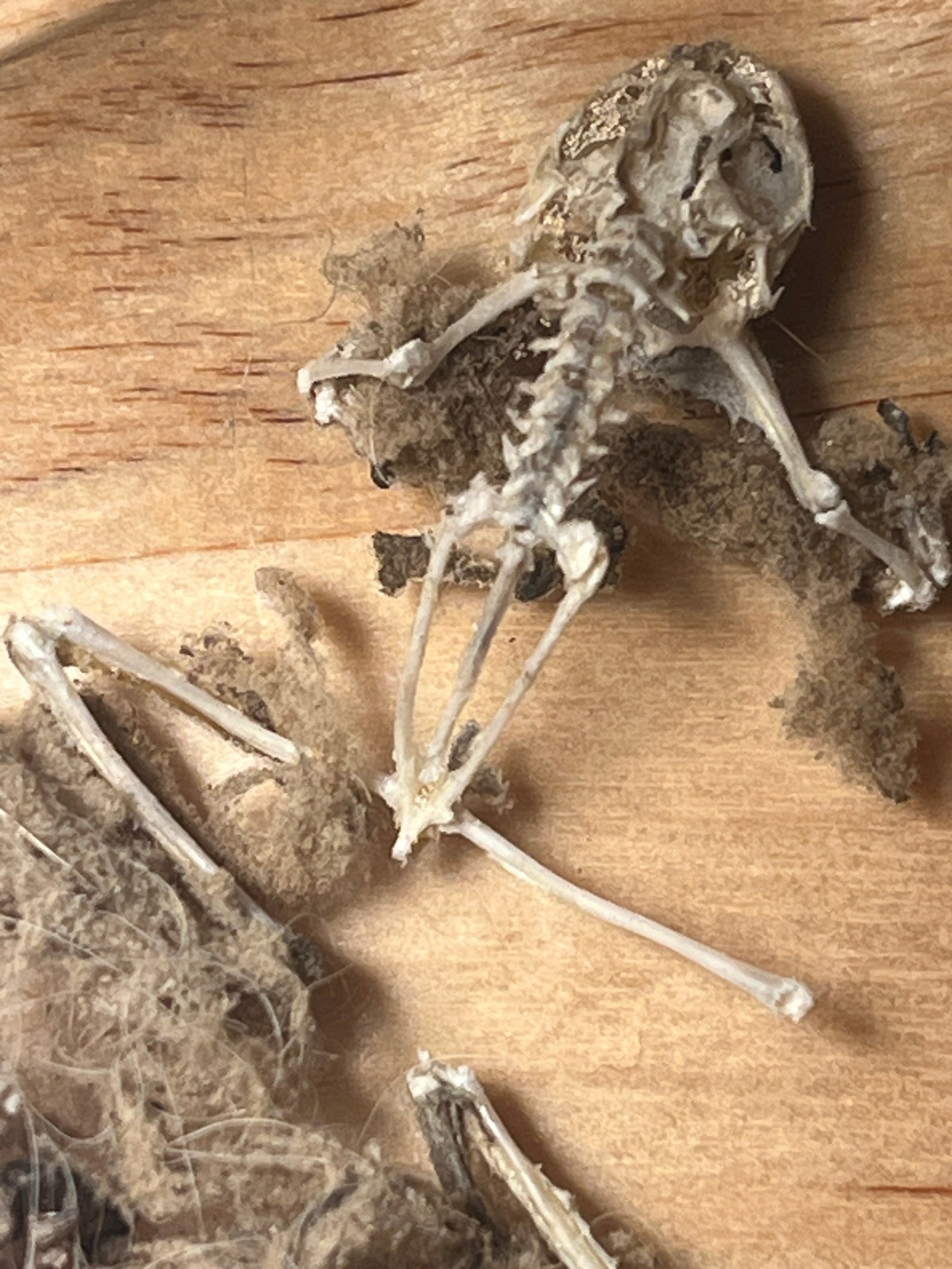When I go hiking, I like to look up and see the sunlight coming down through the leaves of the trees. The leaves filter out a lot of the sunlight, making it softer by the time it reaches me. Let's take a closer look at what is happening when light passes through materials.

Figure 1. Sunlight shining through the leaves of trees (Photo Credit: Holly A. Stuart)
What is Light Transmission?
Light transmission is a measure of how much light can pass through a material. If a material lets all of the light pass through, it is described as transparent - like a clear plane of glass in a window. Translucent materials block some light (but not all) from passing through them. Materials that prevent the transmission of any light are defined as opaque.
In the figure below, the carrot slice on the left of the slide is opaque, meaning it has blocked any light from transmitting through it. Because no light passes through it to reach our eye, it appears black on the light box. The translucent carrot slice in the middle is thinner, permitting some light to transmit through and allowing the orange color to be visible to our eye. The last slice of carrot has parts that are so thin that they are transparent and let all of the white light from the light box pass through them.

Figure 2. Opaque, translucent, and transparent slices of carrot on a light box (Photo Credit: Holly A. Stuart)
Why is Light Transmission Important?
Light transmission is important to microscopists because it has a direct impact on the visibility of specimens placed under a microscope. Microscopes like the Foldscope require light to passthrough the specimen being observed. If light cannot transmit from the light source under the slide and through to the eye, the specimen will appear black. For some objects, the solution to this problem is to view the specimen after it has been cut into very thin slices. A microtome is a tool that can produce extremely thin cross sections of the object being studied (sometimes on the order of only 2 - 10 microns thick!!). The image below shows how the microtome was set up to make the thin carrot slices used for this blog.

Figure 3. A microtome being used to slice a carrot into very thin slices for use in the Foldscope (Photo Credit: Holly A. Stuart)
Microscopic Discoveries
The microtome was invented in the 1800s to overcome the challenge scientists faced when trying to observe the internal structures of specimens. Microtomes offered a solution to that problem and paved the way for the advancement of histology (the microscopic study of tissues).
In the series of pictures below, you can see the internal structure of the cells of the carrot become visible as the slices become thinner.

Figure 4. Thick opaque slice of carrot viewed through the Foldscope at 140X magnification (Photo Credit: Holly A. Stuart)
In the opaque very thick slice of carrot shown above, the Foldscope had nothing to focus on and all that was visible was the orange color of the carrot.


Figure 5a and b. Thin translucent slice of carrot viewed through the Foldscope at 140X magnification (a) and 140X magnification plus 5X from the phone (b) (Photo Credit: Holly A. Stuart)
The thinner, more translucent slice of carrot shown above allowed the orange color to come through, but there was also evidence of cell structure visible in the Foldscope.


Figure 6a and b. Thinnest transparent slice of carrot viewed through the Foldscope at 140X magnification (a) and 140X magnification plus 5X from the phone (b) (Photo Credit: Holly A. Stuart)
The last set of images of the carrot shown above reveal the level of transparency achieved with the thinnest slices from the microtome. So much light is able to transmit through the sample that it appears more colorless than orange and the cell walls are clearly visible.
Have fun exploring with the transmission of light and your Foldscope! Share your microscopic opaque, translucent, and transparent observations on the Microcosmos and use social media to tag us with the results of your explorations, creations, and discoveries! We love to see how Foldscopers around the world are using their Foldscopes in new and innovative ways!
Facebook: @Foldscope
Twitter: @TeamFoldscope
Instagram: @teamfoldscope
Sources:
https://www.canadiannaturephotographer.com/microscopicplants1.html - This website includes many microscopic images taken of plant slices made with a microtome. They are gorgeous!!!



